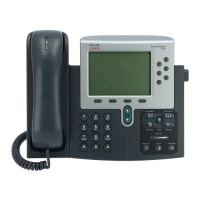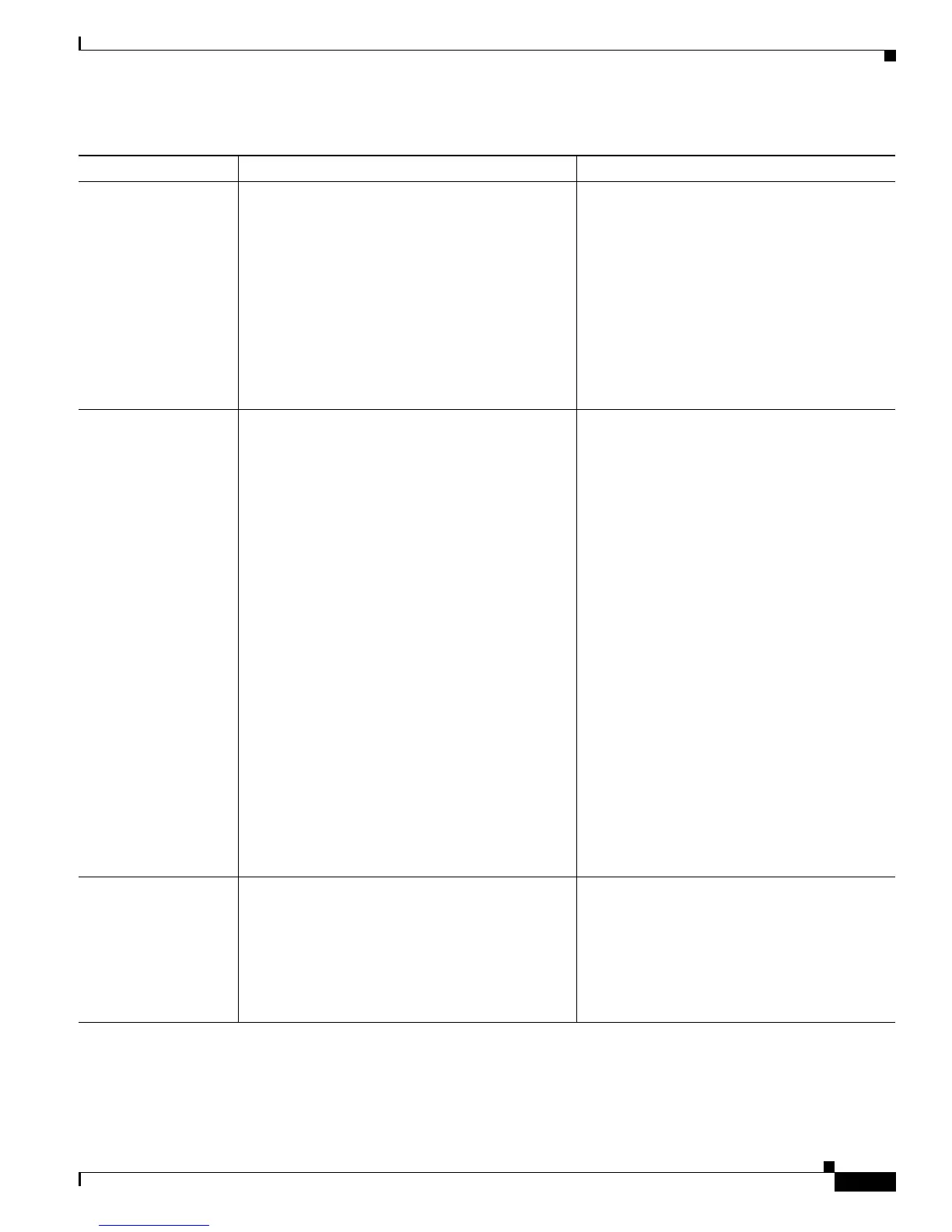4-35
Cisco Unified IP Phone Administration Guide for Cisco Unified Communications Manager 7.1
OL-18913-01
Chapter 4 Configuring Settings on the Cisco Unified IP Phone
Device Configuration Menu
Related Topics
• Displaying a Configuration Menu, page 4-2
• Network Configuration Menu, page 4-5
Auto IP Configuration Displays whether the auto configurations is
enabled or disabled on the phone.
The Auto IP Configuration setting along with the
DHCPv6 setting determine how the IP Phone
obtains its IPv6 address and other network
settings. For more information on how these two
settings affect the network settings on the phone,
see Table 4-5.
Note Use the “Allow Auto-Configuration for
Phones” setting in Cisco Unified
Communications Manager Administration.
From Cisco Unified Communications Manager
Administration, choose Device > Device
Settings > Common Device Configuration.
IPv6 Load Server Used to optimize installation time for phone
firmware upgrades and off load the WAN by
storing images locally, negating the need to
traverse the WAN link for each phone's upgrade.
You can set the Load Server to another TFTP
server IP address or name (other than the IPv6
TFTP Server 1 or IPv6 TFTP Server 2) from which
the phone firmware can be retrieved for phone
upgrades. When the Load Server option is set, the
phone contacts the designated server for the
firmware upgrade.
Note The Load Server option allows you to
specify an alternate TFTP server for phone
upgrades only. The phone continues to use
IPv6 TFTP Server 1 or IPv6 TFTP Server
2 to obtain configuration files. The Load
Server option does not provide
management of the process and of the files,
such as file transfer, compression, or
deletion.
Note When you configure both an IPv6 Load
Server and a Load Server (for IPv4), the
IPv6 Load server takes precedence.
Use Cisco Unified Communications Manager
Administration to modify.
IPv6 Log Server Indicates the IP address and port of the remote
logging machine to which the phone sends log
messages. These log messages help in debugging
the peer to peer image distribution feature.
Note The remote logging setting does not affect
the sharing log messages sent to the phone
log.
Use Cisco Unified Communications Manager
Administration to modify.
Table 4-19 Network Configuration Menu Options (continued)
Option Description To Change

